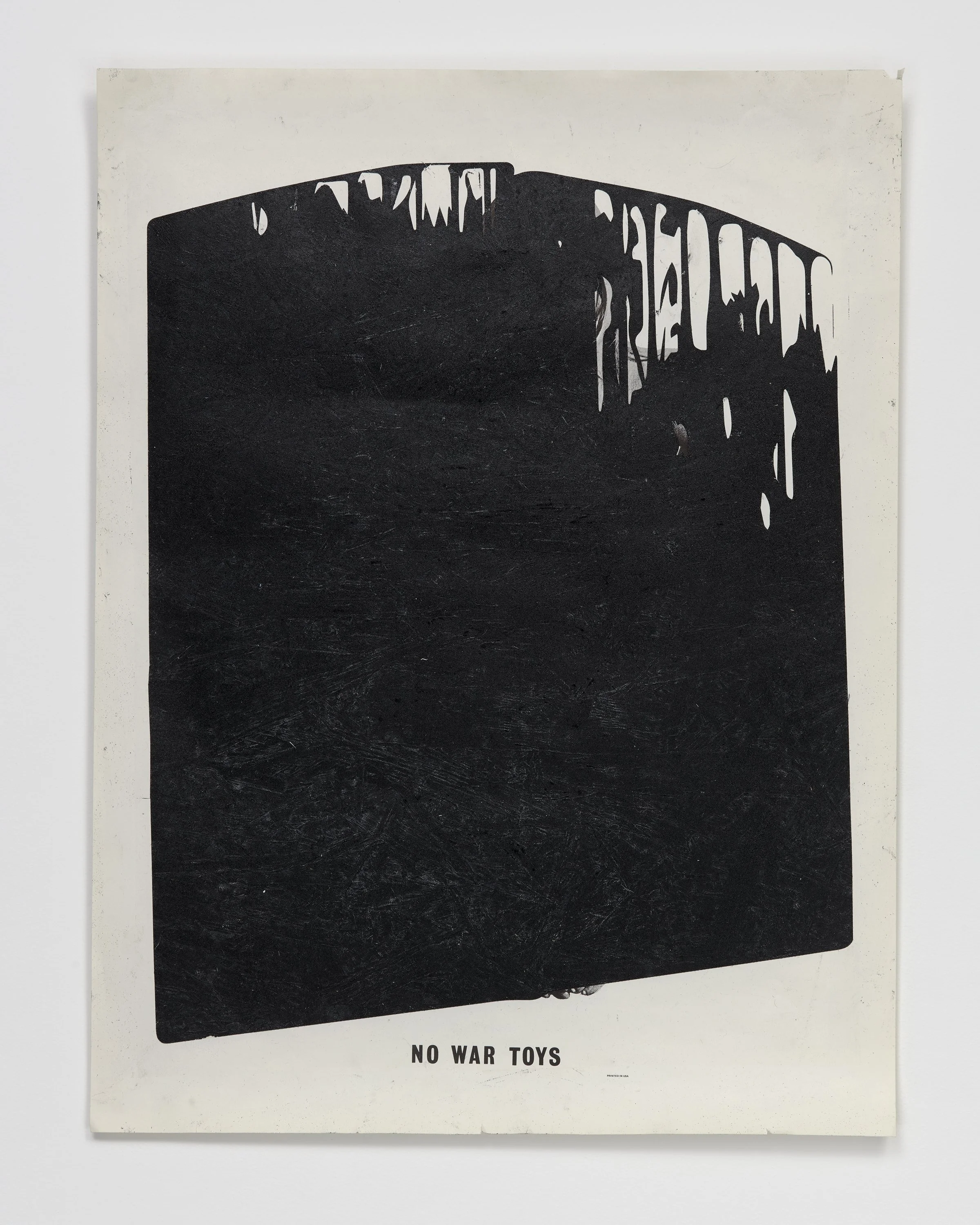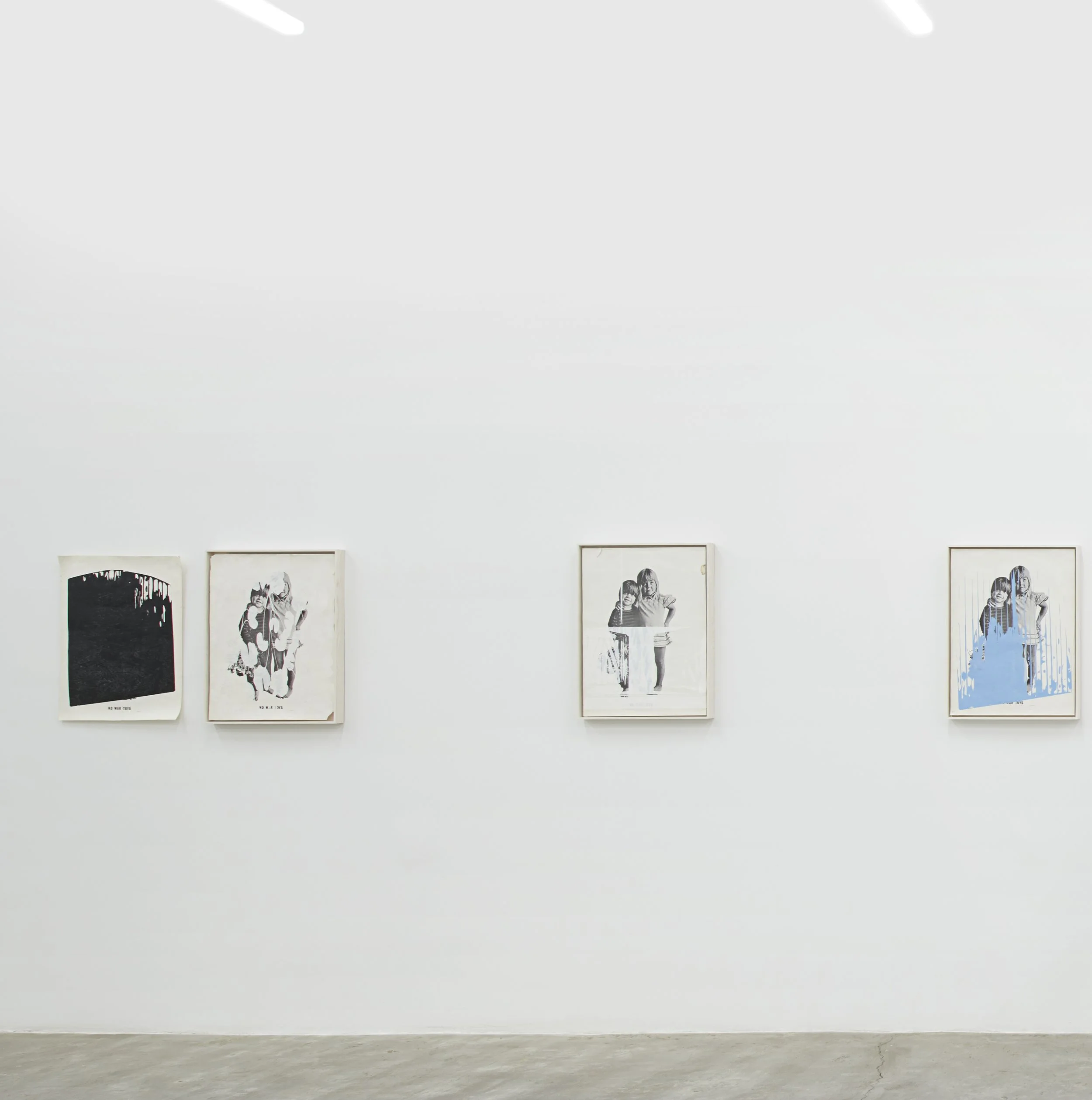Exhibition Review | Jeffrey Joyal: Finalists
Kalyanamitra 2023, Silverpoint on deadstock offset lithograph poster on foam board, 21 1/2 x 16 1/2 in. © Jeffery Joyal
Text: Nicole Miller
On display at David Lewis Gallery is Jeffrey Joyal: Finalists, a revolutionary exploration and experimentation of printing over deadstock posters by employing offset lithography, a variation of the printing technique lithography. Joyal layers woodcuts and a silverpoint drawing on vintage posters of political potency, examining the intentions and effects of counterculture products through his printing processes.
Prima, 2023, Woodcut and linoleum print on deadstock, offset on lithograph poster, 23 3/4 x 18 1/4 in. © Jefferey Joyal.
The anti-war poster above was originally designed in opposition to the promotion of violence through the production of war toys for children. The underlying message condemns America's involvement in the Vietnam War and supports anti-establishment cultural attitudes. The counterculture generation primarily consisted of young hippie protesters, who rejected social norms and expressed their resistance to racial, ethnic, and political injustices through protests and demonstrations. Although Joyal drew over the poster above with silverpoint, we must review the initial image in order to determine our artistic and aesthetic interpretations of his work. The original poster depicts a black and white photograph of two children, a boy and a girl hugging one another. The smiling young boy holds the holster of a gun, which has a bouquet of flowers in the mouth of the gun that serves as an anti-gun violence symbol, evoking flower power ideology. Joyal collected these deadstock posters because he was fascinated by the inherent “temerity it takes to produce it.” He questioned if those who created these posters truly supported counterculture beliefs.
My thoughts on what I'm seeing, 2023, Woodcut and relief print on deadstock offset, lithograph poster, 22 3/4 x 17 1/4 in. © Jefferey Joyal.
In Prima, pictured above, black barn doors are printed over the no war toys poster, a recurring motif throughout the exhibition. In a rather clever and radical manner, Joyal manipulates the barn doors by flattening them through woodcut printmaking to remove the spatial illusion of depth. Joyal explains that “these images and phrases were meant to be powerful, even transformative, but they, like the barn doors, have been flattened.” He preys upon our often cynical nature, investigating the false optimism and unrealistic expectations implicit in this counterculture ephemera. Joyal characterizes the poster of the young kids as “antiwar agitprop,” highlighting the poster’s intrinsic political purpose to influence public opinion through agitation and propaganda.
Courtesy of David Lewis Gallery.
However, Joyal’s decision to print over the vintage posters is not intended to be an aggressive nullification. Instead, Joyal describes his overprinting as “tapping into a shared American history and leaving a new layer.” This declaration emphasizes the anxieties of the present day. In 2023, gun violence has developed to be a crisis point in America, as an alarming amount of gun-related deaths has increased in recent years. Joyal acknowledges the failures of the counterculture movement of the 1960s and 70s, stressing how the postmodernist movement was eventually established in reaction to the dangerous ideals of an American utopia. We struggle with many of the same social, political, and economic structural issues today, allowing for the words of the deadstock poster to lose some appeal. Joyal successfully complicates the original subject, not by rebuking its import, but by questioning its effectiveness.











